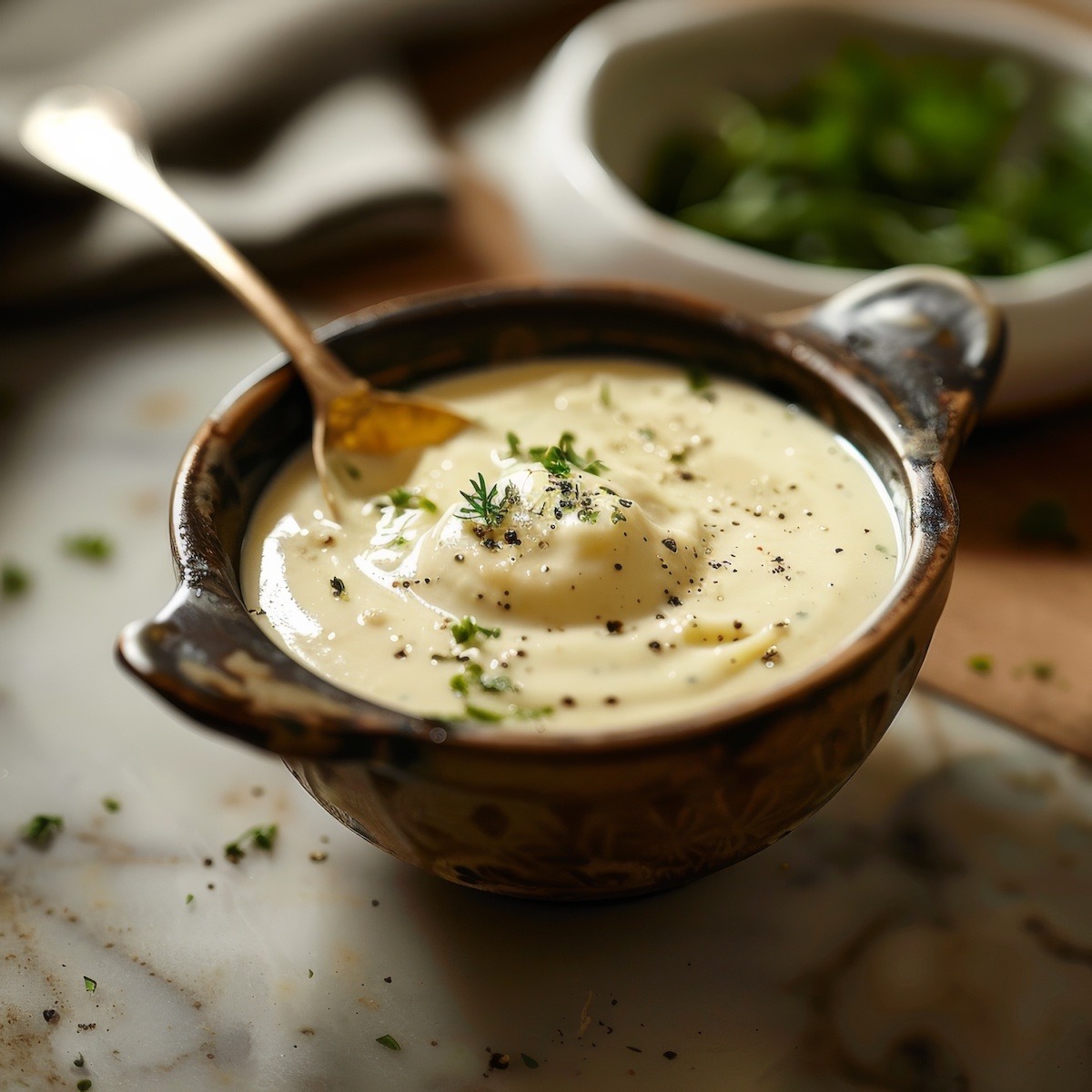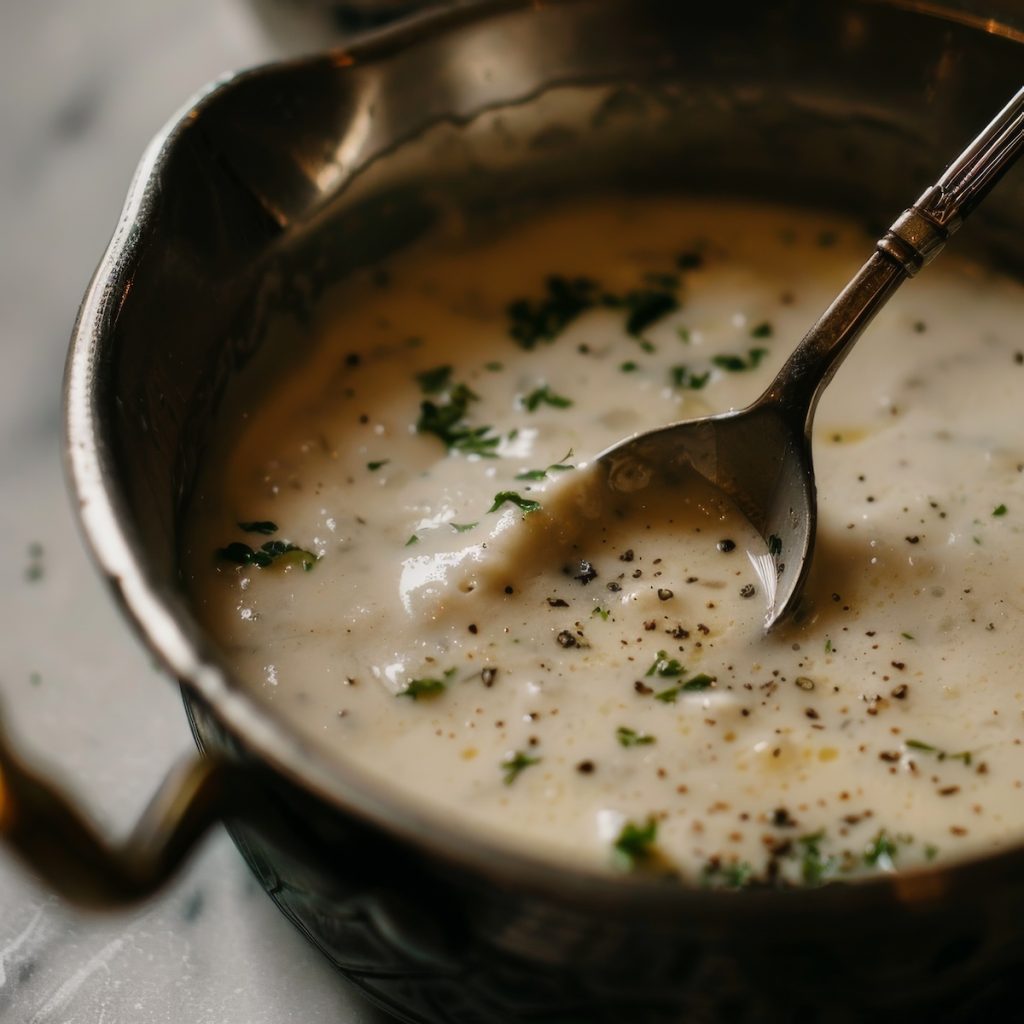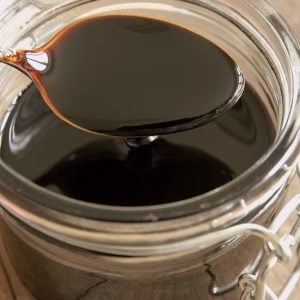How to make a classic Veloute sauce white sauce at home
Velouté sauce, a classic French sauce, is a luxurious and velvety concoction that adds a touch of elegance to any dish. Derived from the French word “velouté,” meaning velvet, this sauce boasts a smooth texture and a rich flavor that complements a variety of dishes, from poultry and seafood to vegetables and pasta. Don’t get nervous about the names of some of these classic sauces like velouté (veh-loo-TAY). It’s a fancy French name for a white sauce that is stock-based and thickened with a white roux.
To create this culinary masterpiece, you’ll need just a few simple ingredients: butter, flour, and a flavorful stock, such as chicken, fish, or veal. The magic of velouté sauce lies in its technique—the careful combination of these ingredients results in a sauce that is both creamy and light, with a delicate flavor that enhances the taste of any dish it graces.
Velouté sauce is a versatile base for countless recipes, whether preparing a classic chicken fricassee or a decadent seafood bisque. Its smooth consistency makes it ideal for binding ingredients together or serving as a sumptuous topping. It’s easy to customize with herbs, spices, or additional ingredients to suit your taste preferences.
In this post, I explore the step-by-step process of making velouté sauce from scratch and tips and tricks for always achieving the perfect texture and flavor. Get ready to elevate your culinary creations with this essential French sauce!
From this basic Velouté sauce, you can create dozens of other sauces by introducing other ingredients. The two most famous classic sauces made from Velouté are Allemande (German Sauce) and Sauce Suprěme.
You can also learn more about making sauces at home here.

History
Velouté sauce traces its origins back to classical French cuisine, which emerged as one of the five mother sauces codified by the renowned chef Auguste Escoffier in the late 19th century. These mother sauces formed the foundation of French cuisine, serving as bases for countless derivative sauces.
The term “velouté” translates to “velvety” in French, aptly describing the sauce’s smooth and luxurious texture. Originally, velouté sauce was made by combining a roux of flour and butter with a light stock, such as chicken, veal, or fish. This combination creates a rich and delicate sauce, providing a versatile canvas for culinary experimentation.
Velouté sauce rose to prominence during the golden age of French gastronomy, where it became a staple in the kitchens of aristocrats and professional chefs alike. Its versatility made it indispensable in haute cuisine, where it served as the base for countless classic dishes.
Over time, chefs have adapted velouté sauce to suit various tastes and culinary traditions, incorporating different stocks, herbs, and spices to create unique flavor profiles. Today, velouté sauce remains a cornerstone of French culinary technique, cherished for its velvety texture and ability to enhance a wide range of dishes.
Velouté Sauce Recipe
Ingredients
- 1 ½ cups white stock veal, chicken, or fish - white stock just means the bones were not roasted
- 2 tablespoons butter unsalted
- 3 tablespoons flour
- salt and pepper to taste
Instructions
- All you need to do is assemble the ingredients and get your cookware together.
- Bring the stock to a simmer in a large saucepan.
- In a separate saucepan, melt the butter over low heat (don't let it burn) and add the flour. Raise the heat to medium and stir the butter and flour together for about 2 minutes.You are making the roux. Take a good whiff and it should have a pleasant toasted smell.
- Whisk the simmering stock into the roux and keep heating and whisking.
- When the stock begins to simmer again, turn down the heat to low and cook until the sauce thickens. A thin skin may form, just skim it away with your spoon.
- Depending on your stove-top, the sauce may take 5 - 10 minutes to get to your desired consistency.
- Season with salt and pepper
- Strain if you have a fine mesh strainer or chinois.














12 Responses
I m interested in the veloute with spinach.
May I have the instructions as how to prepare it?
Thank you
Follow the basic instructions to make a veloute if you dont want chicken stock use veg
take a handful of spinach and blitz (blend) it through the sauce until you have your desired taste..
thanks for this interested tips.
Dos anyone know how to make a Noilly Prat veloute that works well with pasta and seafood? Truly grateful for any advice.
When working with roux, hot stock is added to cold roux or if your roux is hot than cold stock is used.
You have to add the hot stock in hot roux and stir fast until the sauce is smooth finely and simmer in medium-low heat for 10-15 min., season with salt and pepper to taste.
No, you’re wrong. It has to be cold roux and hot stock or hot roux and cold stock. That’s how traditional French cuisine works.
thanks a lot, it’s important to know what is the difference of brown and white stock
In white stock there’s no Browning of meaty bones but it’s in brown stock.
Yes, Rispah, that is true. I believe it’s what I said in the recipe.
A veloute is not a white roux it is a blonde roux. A white roux is for bechemel.
White roux and milk is beshamel. Blond roux blond stock (chicken or fish) is veloute. Brown roux and brown stock (beef) is an espanole.